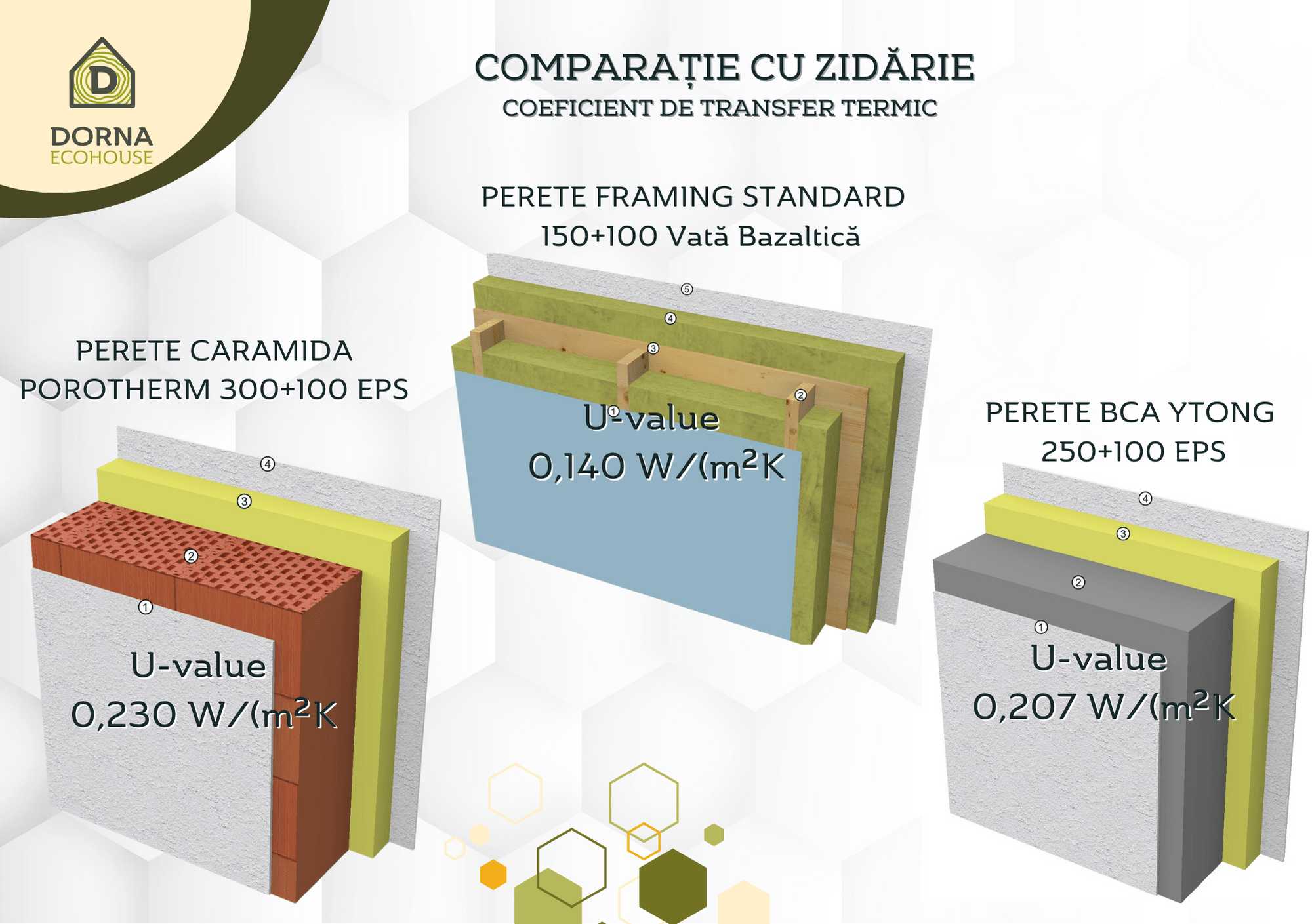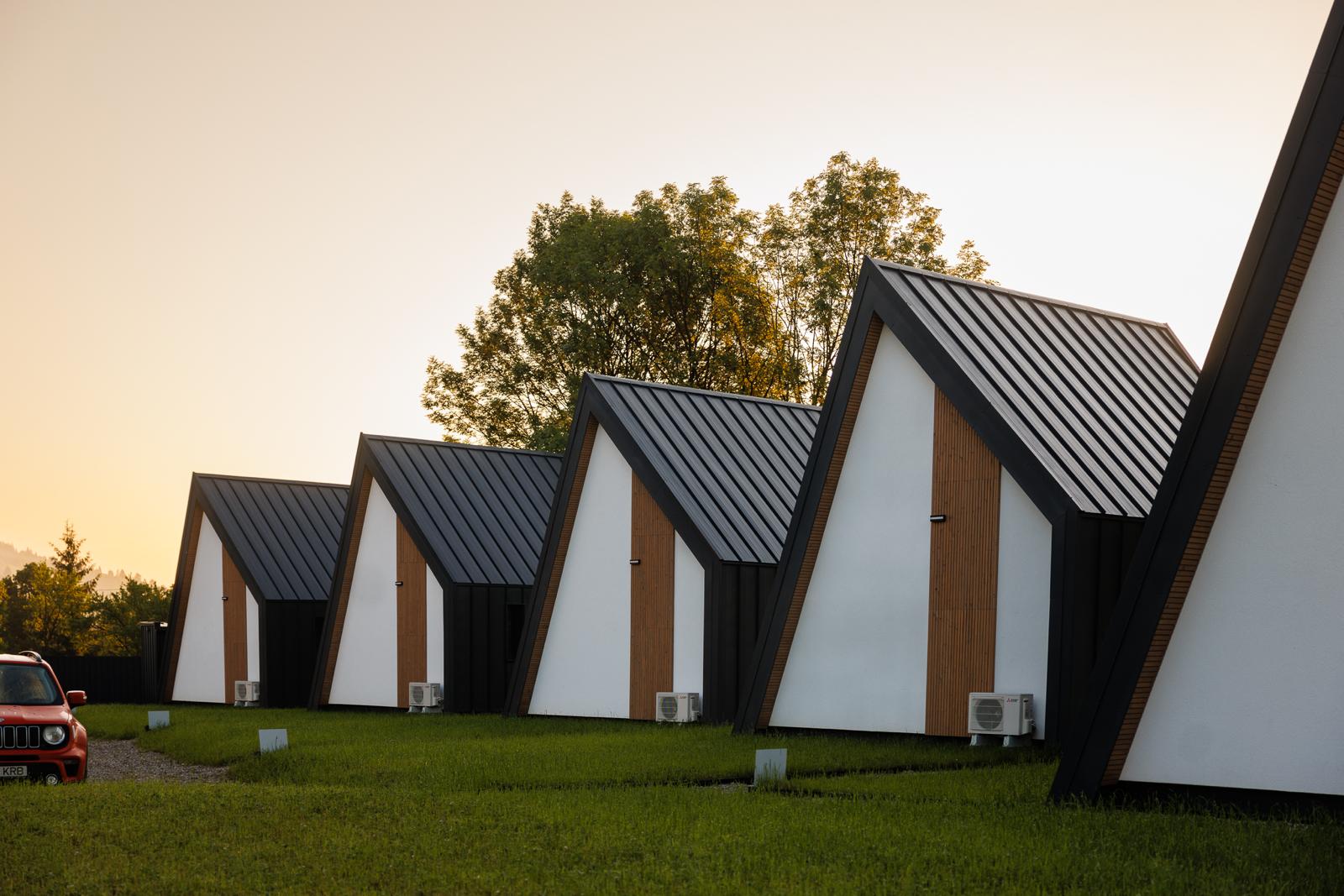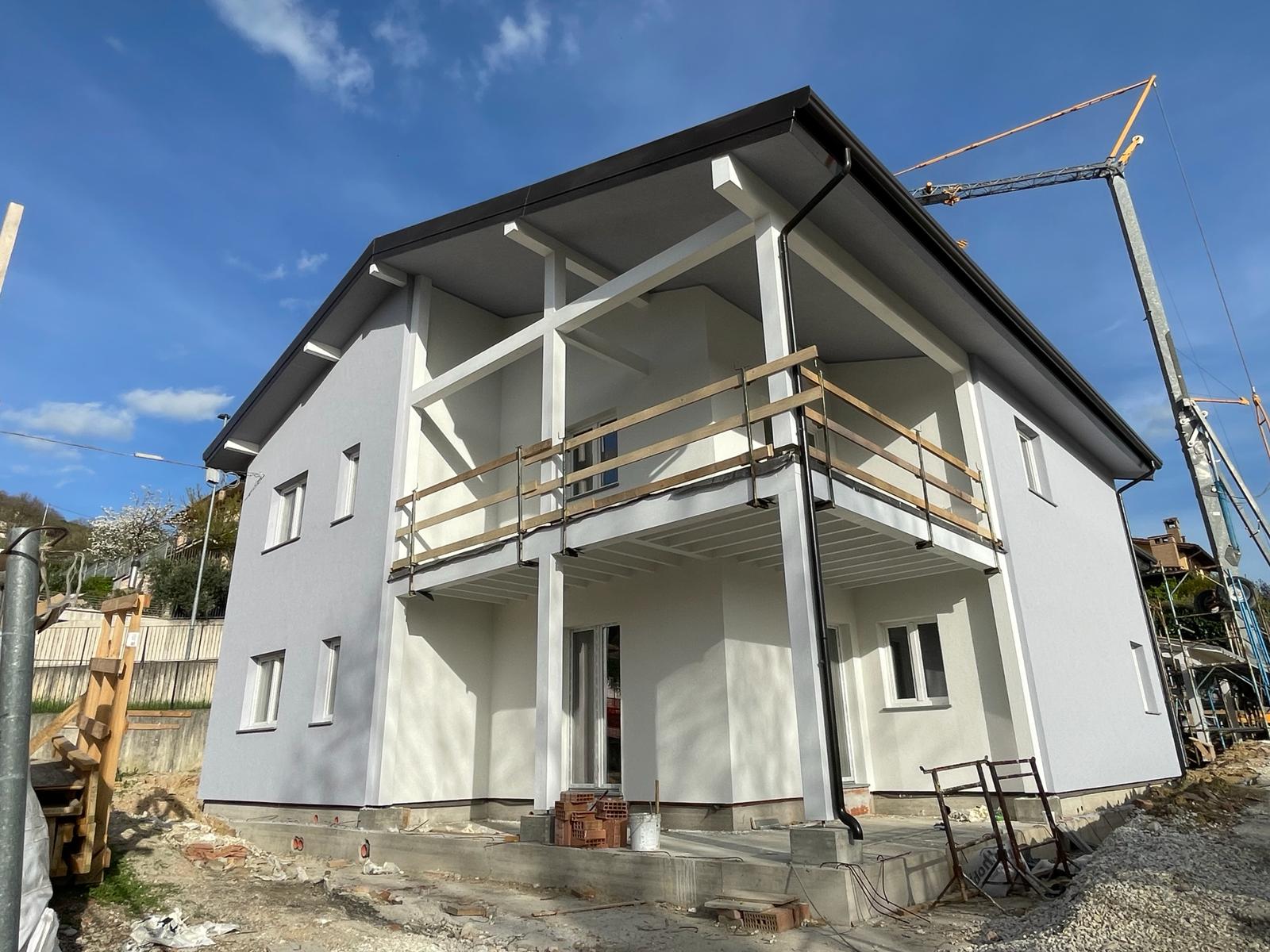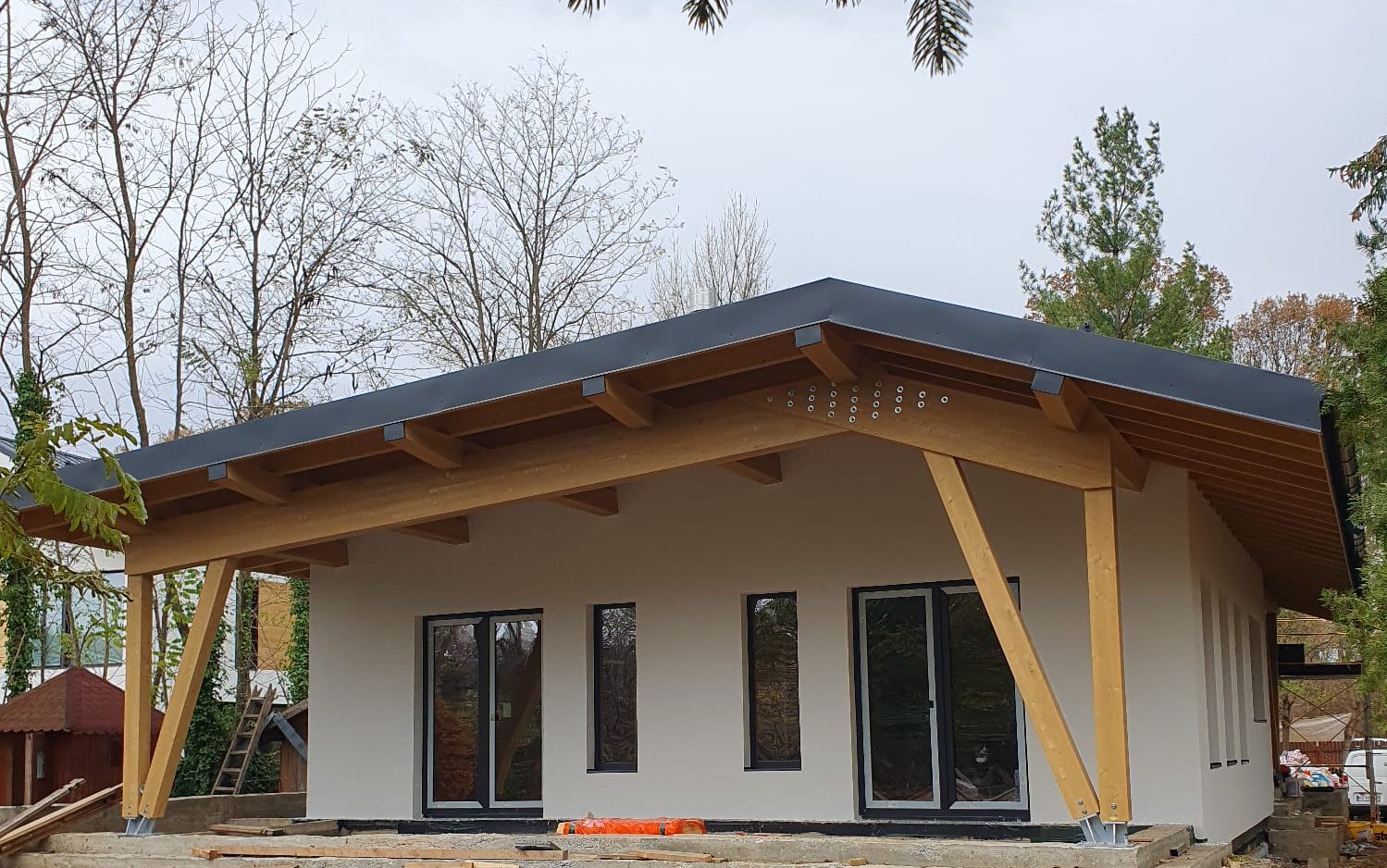Building a home is one of the most important decisions people make regarding their comfort and safety. In recent decades, the use of wood as a building material has gained increasing ground, due to significant advantages in energy efficiency, health impact and speed of construction. We will explore these issues with technical arguments to highlight the advantages of timber construction compared to masonry or brick.
Brick wall
In this detailed analysis, we investigated the performance of a classic masonry wall, as it is commonly built in Romania. We focused on a wall made of Porotherm brick, completed with a 100 mm expanded polystyrene thermosystem. Our assessment methodology included the use of the Ubakus platform, a German website specialising in calculating energy efficiency and providing relevant data
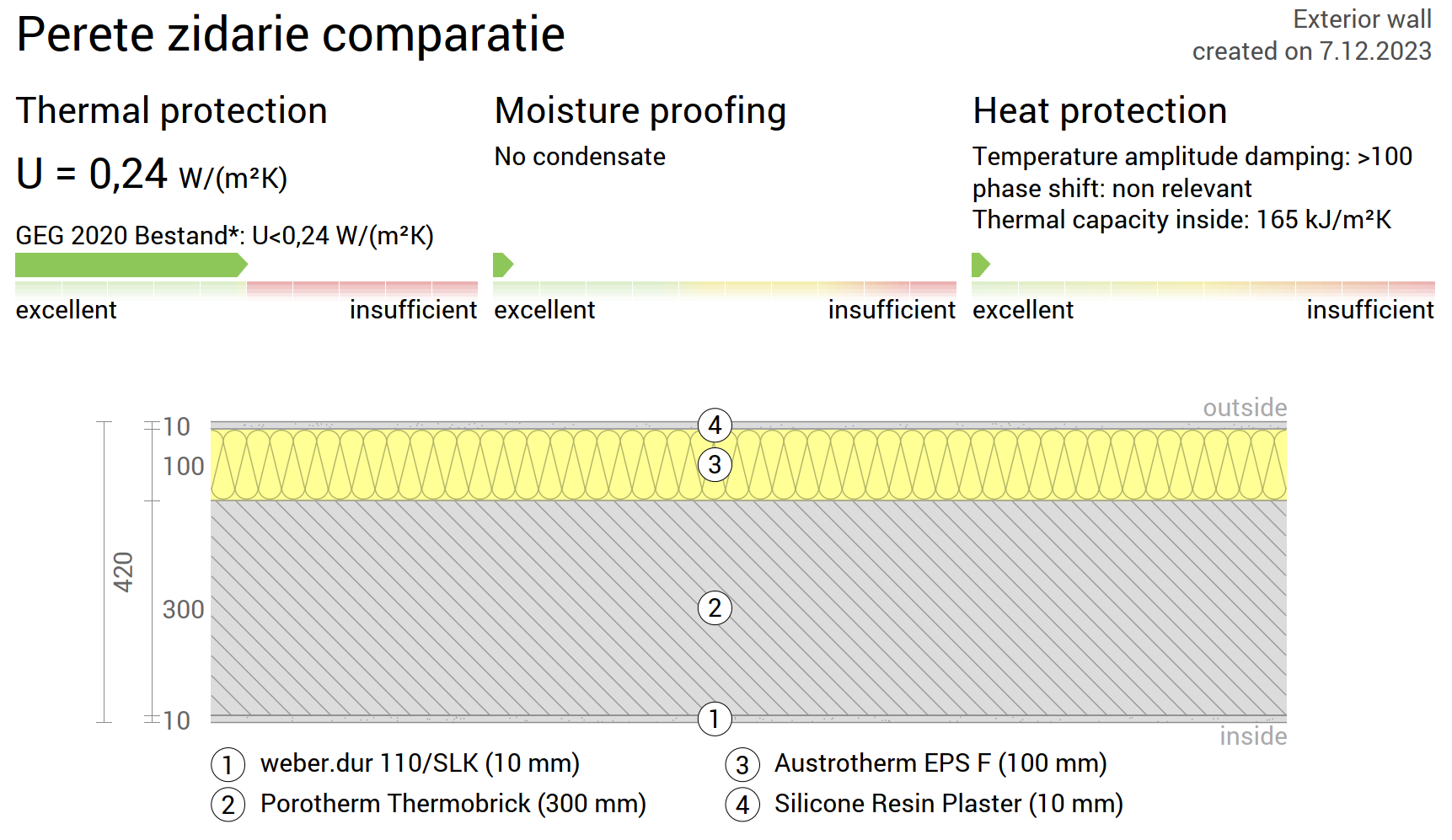
ACC wall
In the next stage of our analysis, we investigated another popular construction option in Romania, namely the ACC (Autoclaved Cellular Concrete) wall. We considered the Ytong ACC with a thickness of 25 centimetres, with a 100 mm expanded polystyrene thermosystem applied on the outside, similar to a brick wall.
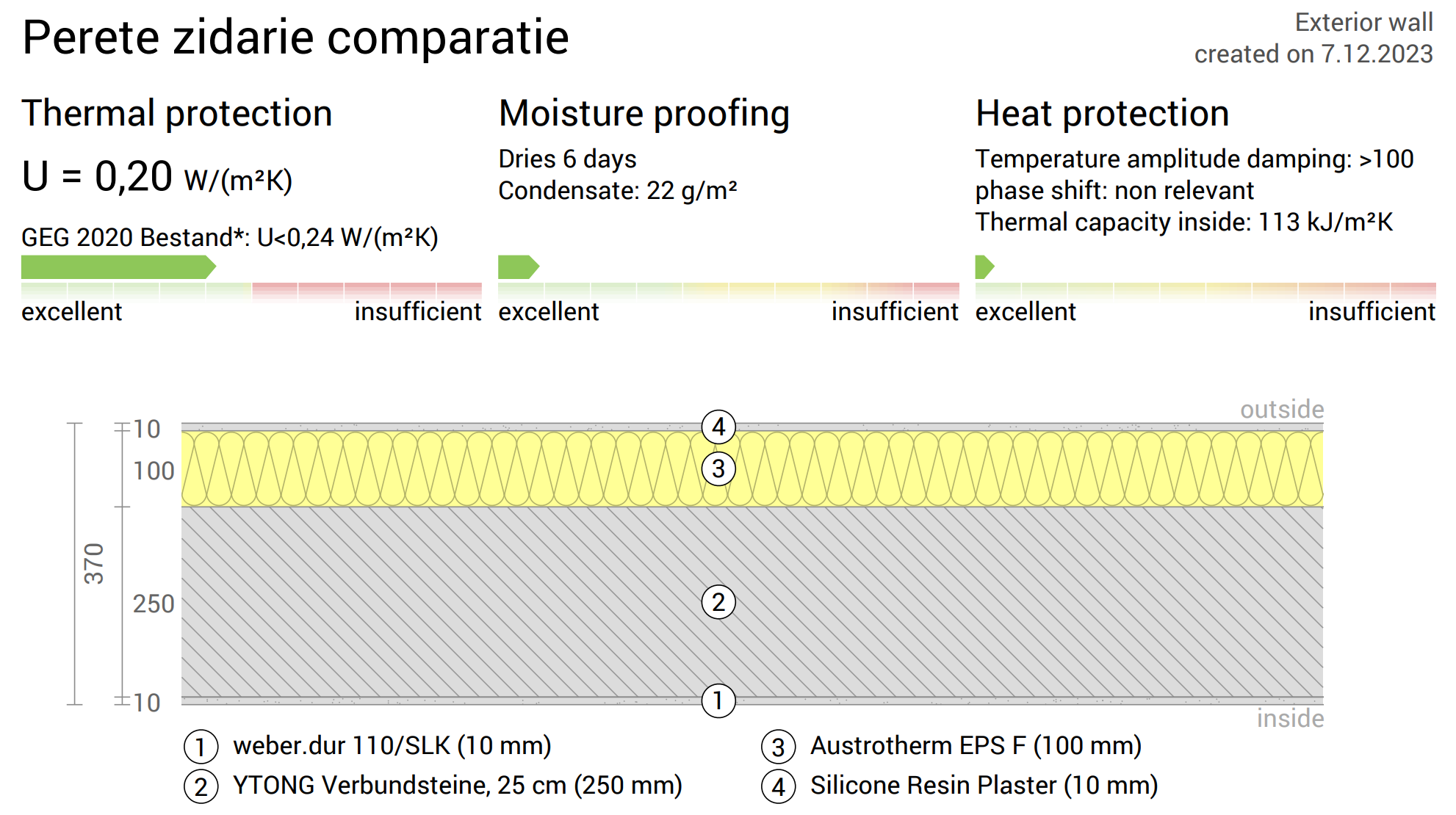
Wall on wooden structure
In our analysis of energy efficiency, we explored a timber construction alternative based on the classic option offered by DornaEcoHouse. Although our structures allow for a much better insulated wall, in order to maintain price consistency, we opted for a variant that incorporates modern techniques and advanced materials.
Technical details of the wooden wall:
1. Framing structure: The wall was built using frames of treated, dried timber uprights measuring 45x150 mm, spaced 60 cm apart. This method ensures structural strength and allows for increased efficiency in the construction process.
2. Efficient insulation: Between the wooden uprights, we used Rockwool basalt wool with a thickness of 150 mm, which provides an effective thermal barrier. This helps reduce heat loss and improve energy performance.
3. Water Vapour Permeable Plywood: For the exterior, we chose a vapour permeable plywood such as DHF or DWD. This strategic choice prevents condensation and ensures a healthy indoor environment by preventing indoor moisture build-up.
4. Thermosystem with Basaltic Wool: Towards the outside of the wall, we applied a 100 mm thermosystem using basaltic wool. This choice was determined by its vapour permeable characteristics, thus contributing to maintaining a healthy indoor climate and eliminating the risk of moisture accumulation
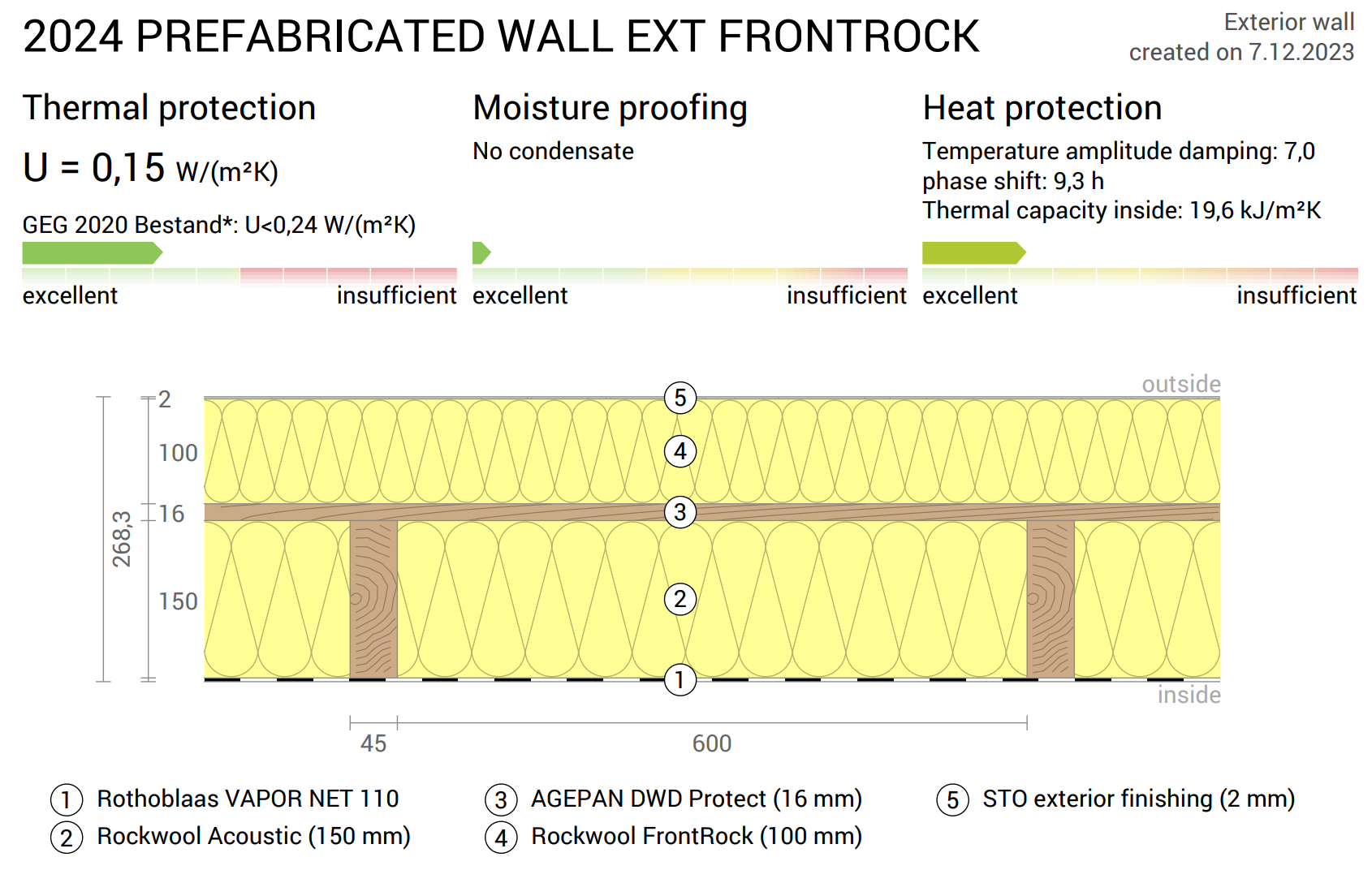
Conclusion
This innovative approach to timber construction not only maximises energy efficiency, but also ensures durability and comfort. Through the use of natural materials and modern wood industry technologies, the wooden wall becomes a viable and sustainable solution, adapted to the high standards of modern construction.
Brick wall: The variant we analysed, the most popular in Romania and priced comparably to those for BCA and wood, requires a thickness of about 400 mm, being 40% less insulated than the wooden wall presented above.
ACC wall (Ytong): Despite some improvements, the ACC wall requires a total thickness of about 350 mm and is about 30% less insulated than the wooden wall.
Wood wall (DornaEcoHouse): With a total thickness of only 250 mm, the wooden wall remains the most energy efficient, outperforming its competitors by a significant margin.
Results and observations:
It is important to note that U-values for brick vary according to the data sheets, the most optimal being 0.230 W/m2K and the most common being 0.240 W/m2K. We considered this variation and chose a common value in our analysis, both of which are well below the efficiency of the wooden wall. It has a lower coefficient, reinforcing our conclusions on its superiority compared to brick and concrete wall.
Specifically, in a wooden structure, the amount of heat needed for cooling and heating will be reduced by at least 30%, resulting in lower costs for home use and a smoother lifestyle. Choosing a wooden wall not only saves energy, but also turns your home into an efficient and comfortable space.
